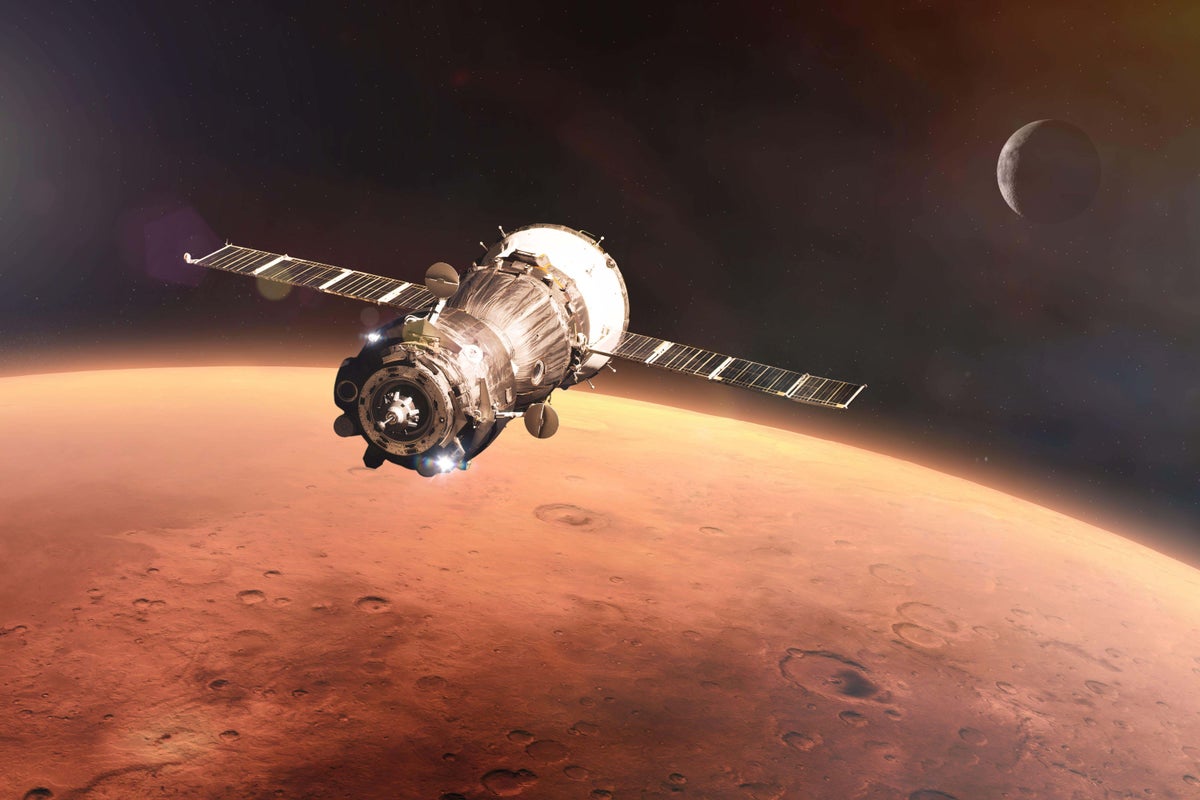Science
NASA Unveils Promising Signs of Past Life on Mars

NASA has announced significant findings that could suggest the past existence of life on Mars. Recent analysis from the Perseverance Rover has uncovered distinctive patterns of unusual minerals in the clay-rich rocks located at the edge of Jezero Crater. This area, known to have been an ancient lake nourished by Martian river systems, is now a focal point for astrobiological research. The identified “leopard spot” patterns resemble those created by microorganisms on Earth, raising intriguing possibilities about microbial life on Mars.
Despite the excitement surrounding these findings, experts caution that the evidence remains inconclusive. The discussion about life on Mars has been revitalized, emphasizing the need for multiple lines of evidence to draw definitive conclusions. Early Mars and Earth shared similar conditions, including atmospheres and magnetic fields that protected both planets from harmful solar radiation. These environments also supported liquid water, which is essential for life as we know it.
Over time, Mars underwent significant changes. As its core cooled, the planet lost its magnetic field, exposing the surface to solar radiation, which led to atmospheric erosion. This transformation resulted in the cold, dry desert conditions present today. Consequently, scientists are less likely to find living organisms on the Martian surface, as the environment is too hostile. Instead, research focuses on the potential for hidden microbial life in protected areas beneath the surface or within icy regions.
Promising locations for microbial life on Mars include caves, regions beneath polar ice sheets, and the deeper subsurface. These areas provide analogues to Earth’s extreme environments, which host various microorganisms. For instance, Earth’s deep biosphere contains a wealth of microbial life thriving in rock cracks. Some of these microbes, known as lithoautotrophs, derive energy from the rocks themselves. On Mars, methane, a potential byproduct of microbial activity, has been detected; however, it can also be generated through non-biological processes, making its presence ambiguous.
The potential existence of a subsurface biosphere on Mars depends on several factors, such as the availability of liquid water, energy sources, and suitable temperatures. Although evidence for liquid water beneath the Martian surface has emerged, this remains a topic of debate among scientists. Liquid water could facilitate chemical reactions that provide energy for microbial life, similar to processes observed on Earth.
To explore the possibilities of past and present life on Mars, researchers study Earth’s extreme environments, including the Atacama Desert, sediment samples from Lake Salda in Turkey, and salts found in Pilot Valley, Utah. These locations help scientists understand how Martian conditions might influence life and its preservation. Additionally, controlled laboratory experiments, such as those conducted in specialized “Mars chambers,” simulate Martian atmospheric and environmental conditions.
Currently, there is no definitive evidence of life on Mars, either past or present. NASA’s “leopard spots” represent the most promising indication yet, but further investigation is necessary. If life persists on Mars, it is likely not widespread; previous missions have not detected clear signs of it.
Looking ahead, the upcoming European Space Agency (ESA) ExoMars Rosalind Franklin rover is set to drill up to two meters beneath the Martian surface. This mission will provide an opportunity to study the shallow subsurface, which may harbor living microorganisms. However, many scientists agree that deeper exploration is essential.
Drilling deep into the Martian crust poses significant scientific and engineering challenges. Yet, this endeavor could be pivotal in unlocking the mysteries of potential Martian life. As research continues, the quest for understanding whether life ever existed on Mars remains a compelling focus for scientists worldwide.
-

 World2 days ago
World2 days agoCoronation Street’s Shocking Murder Twist Reveals Family Secrets
-

 Entertainment4 months ago
Entertainment4 months agoKate Garraway Sells £2 Million Home Amid Financial Struggles
-

 Entertainment3 months ago
Entertainment3 months agoAnn Ming Reflects on ITV’s ‘I Fought the Law’ Drama
-

 Health3 months ago
Health3 months agoKatie Price Faces New Health Concerns After Cancer Symptoms Resurface
-

 Entertainment3 weeks ago
Entertainment3 weeks agoCoronation Street Fans React as Todd Faces Heartbreaking Choice
-

 World3 weeks ago
World3 weeks agoBailey Announces Heartbreaking Split from Rebecca After Reunion
-

 Entertainment5 days ago
Entertainment5 days agoTwo Stars Evicted from I’m A Celebrity Just Days Before Finale
-

 World5 days ago
World5 days agoKevin Sinfield Exceeds Fundraising Goal Ahead of Final Marathons
-

 Entertainment3 months ago
Entertainment3 months agoCoronation Street’s Carl Webster Faces Trouble with New Affairs
-

 Entertainment3 months ago
Entertainment3 months agoWhere is Tinder Swindler Simon Leviev? Latest Updates Revealed
-

 Entertainment4 months ago
Entertainment4 months agoMarkiplier Addresses AI Controversy During Livestream Response
-

 Science2 months ago
Science2 months agoBrian Cox Addresses Claims of Alien Probe in 3I/ATLAS Discovery





















